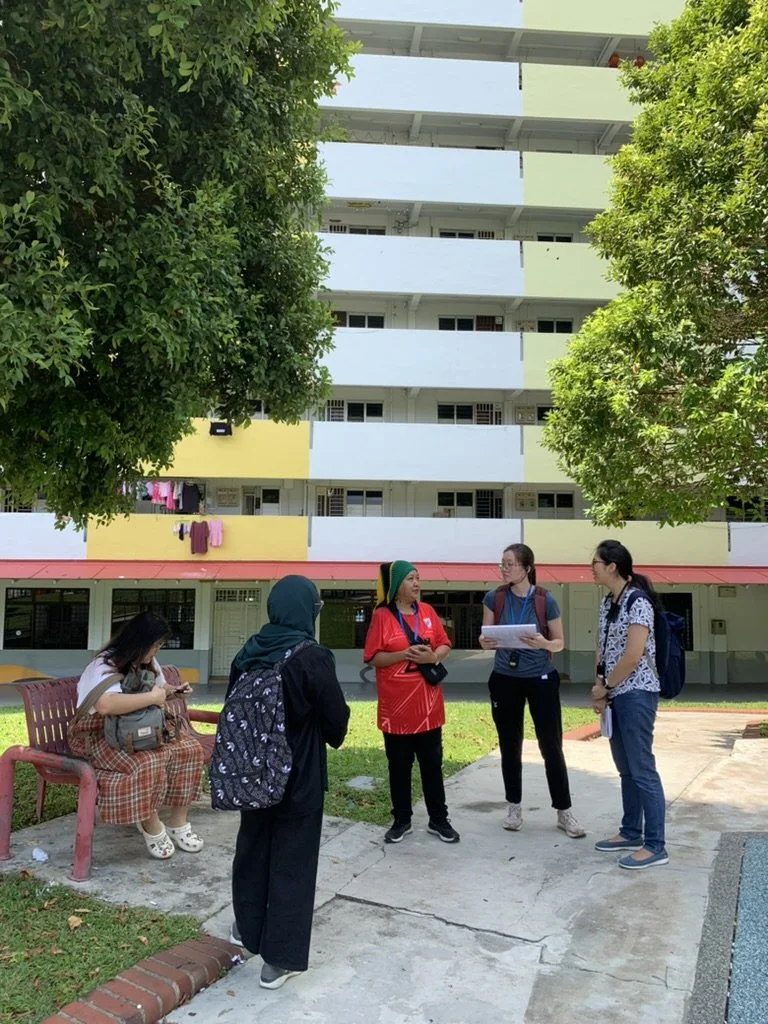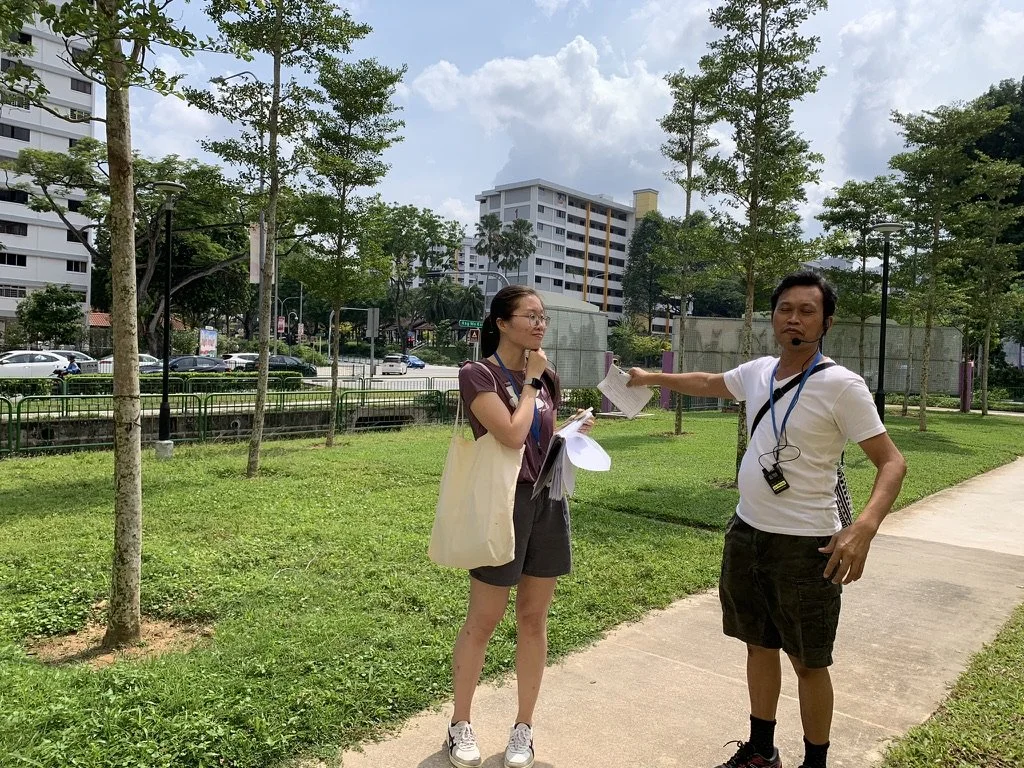When I think of my neighbourhood, kampung isn’t the first word that pops into mind. My neighbours aren’t who I would refer to as my kaki lang either. Yet, going into my first Resilience Trail since starting my internship at Skillseed has shown me otherwise.
With the artistic Camy and motherly Siti as our Community Guides, Ang Mo Kio was re-introduced to me through their lived experiences and lenses. I got to see how they have contributed, mobilised and grown from their love for the community translated into volunteerism. In turn, these Resilience Trails have also been a source of reflection on what my perception of the neighbourhood, being neighbours and the role of the government in the neighbourhood is.
THE NEIGHBOURHOOD
Having lived in a HDB for the majority of my life, I define my neighbourhood to be… a series of blocks with the same painting scheme and the other features (playgrounds, mamak shops, neighbourhood police stations) that are entrapped within or surrounding those colours. Nothing special, another copy and paste of the other thousands of neighbourhoods sprawled across the island.
Everything in this photo was either upcycled or donated!
Yet, Camy has shown me that you can turn the neighbourhood into his very own playground while bringing out its own distinctive identity. Armed with his paints, brushes and creative mind, he takes on the blank walls as blank canvases, blessing the community with fantasy beyond the mundane. Creativity can also extend itself in practical ways, with Camy decorating the Children’s Library, attracting young minds to come down and read. Camy's commendable contribution can be articulated through each action and step that he had undertaken - from organising what was previously a storage space, to conceptualising the library, designing the space and thinking of sustainable activities to constantly bring life and children into the space.
BEING NEIGHBOURS
Although I do have a close group of neighbours that I grew up with, I rarely make the effort to go out of my way to build relationships with other neighbours. While I recognised many familiar faces from over the years, I never dared to say hello. There’s a nagging thought that it would be awkward, and it makes me cringe and stop from greeting these neighbours with even a simple hello.
Siti in her element
Yet, Siti flings all the overthinking out the window. She has even built enough social capital within her neighbours to even start a soccer club with the boys in the neighbourhood after observing that they did not have a suitable space to be meaningfully engaged. I really loved how she has made a positive impact on the children of the community, teaching them values and even catering to their needs as much as possible. Although the children may not see it now, I can imagine that she has brought many cherished memories for many in the soccer club.
ROLE OF GOVERNMENT IN THE NEIGHBOURHOODS
While residents may have various ideas on how to spruce up their neighbourhoods or encourage bonding with neighbours, they often have to check in with administrative bodies for the green light to proceed with these projects.
Camy shared with us that he does not always receive a timely response, delaying his dream project of painting an art mural at an empty wall in the void deck till further notice. This problem left an impression on me as I sensed the non-response is frustrating for Camy. It also makes it difficult for the people to naturally develop their kampong identity and can sometimes impede the process of gotong royong through tedious administrative processes. However, I also understand that at the end of the day, the public spaces belong to the HDB and they are also the ones responsible for maintaining it.
Camy pointing out the patch of grass where there used to be plants 🙁
Still, I felt that there were instances where consultation with residents would have gone a long way in co-creating our neighbourhoods. As Camy shares, plants lovingly sown and carefully tended by the residents had been removed without any warning. It already felt like such a sting to me who only had to listen to what happened to them, I cannot imagine how upset the residents who went through all the painstaking work must have felt.
Following the theme of the role of higher-ups in the neighbourhood, Siti paints a different picture of the administration - one that works speedily on given feedback and is thoughtful of their residents. Changes for the betterment of wheelchair users and caregivers were effectively made, based on residents’ feedback. While I understand that there is a high density of elderly living in the neighbourhood and its implications in the priority and actions of the town council, it was quite interesting to see the contrasting attitudes and impression the Guides had of the administration.
Despite the contradicting expressions, the importance of Citizen Participation was highlighted in both experiences. I really loved that the neighbourhood is not one that is apathetic towards the people and space, and that Camy and Siti are constantly seeking out ways to better the lives of those around them in whichever capacity they can. Their humility in asking the administration for their support and help is also admirable, and it’s amazing to see what the town council management can do to support their residents when notified of an issue or improvements that can be made.
To end off the few thoughts I had from my first resilience trails, I would like to share what left the deepest impression on me. Interestingly enough, both Siti and Camy shared the same thing when asked why they volunteer and give so much to their neighbours - “because our neighbours are our best friends, the first people to respond around us, even before our own family members”.
Maybe it’s time for me to go say hi to the neighbours I avoid eye contact with.




